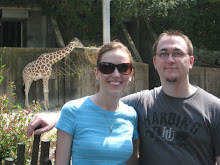Here is a paragraph I wrote for one of the book reports I had the "privilege" of writing. Some of this may not make complete sense because I wrote it assuming the reader had some knowledge of the contents of the book, but I think you can still get the general idea. I don't think this issue is as big a deal today as it was 10 years ago, but I have definitely seen places where it is still a problem. If we want change, we need to be aware of issues when we see them, and be willing to speak up to let others know something should be done. This also means talking with your children when presented with a situation like this, and letting them know that there is a difference in the way the word "adoption" is used. The next time someone tries to get you to "adopt" something, speak up!
Another observation this book made that will really help me while parenting my child is the responsibility we have to be advocates for our child and the adoption system in general. This book pointed out how recently our society has started trying to sell things by providing the “adopt-a” approach to tug on the heartstrings of consumers. This includes “adopted” cabbage patch kids, and "adopt-a" highway, animal, book, tree, park, etc. Unfortunately the use of the word “adopt” associated with these programs can really cause problems for children, whether they are adopted or not. Children are concrete thinkers and don’t understand that there is a difference between adopting a person, and adopting something else. Children don’t understand why they can’t take home an animal at the zoo that they’ve “adopted” or how other people could also adopt that same animal. A child in foster care might be teased by another child with taunts such as, “We adopted a giraffe. Nobody wants you!” Children also start to wonder if adoption just means giving children to the parents with the most money. Finally, even with adoption programs that animal shelters provide, if children see an animal “adopted” but later returned because of a problem the animal has that can’t be fixed, that makes them start to question the permanence of their own adoptions. Adults are able to think abstractly and see the difference between adopting a child and adopting a tree, but children haven’t reached this level of maturity yet. It is up to me to help people understand the issues an “adopt-a” program could cause, and help come up with alternate solutions. Thankfully this issue doesn’t seem to be as big now as it has been in the past, and for the most part, I see adopting an animal from a humane society to be the closest use of the term.
Subscribe to:
Post Comments (Atom)



1 comment:
Great journey and experience!
Post a Comment